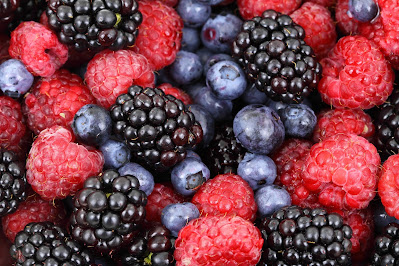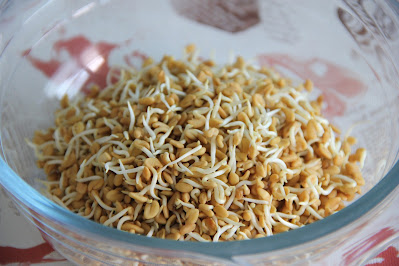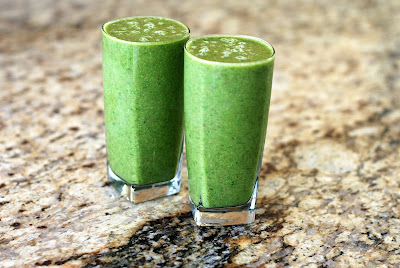Here are the Top 10 Fruits That Promote Insulin Sensitivity:
Berries: Berries such as strawberries, blueberries, raspberries, and blackberries are rich in antioxidants and fiber, which can help improve insulin sensitivity and reduce inflammation.
Apples: Apples are high in fiber and polyphenols, which can help regulate blood sugar levels and improve insulin sensitivity.
Pears: Pears are also high in fiber and polyphenols, making them a good fruit choice for improving insulin sensitivity.
Kiwi: Kiwi is a good source of vitamin C, which has been shown to improve insulin sensitivity.
Grapefruit: Grapefruit is low in calories and high in fiber, making it a good fruit choice for improving insulin sensitivity.
Oranges: Oranges are high in vitamin C and fiber, which can help regulate blood sugar levels and improve insulin sensitivity.
Cherries: Cherries are rich in anthocyanins, which have been shown to improve insulin sensitivity.
Plums: Plums are high in fiber and polyphenols, which can help regulate blood sugar levels and improve insulin sensitivity.
Guava: Guava is high in vitamin C and fiber, making it a good fruit choice for improving insulin sensitivity.
Papaya: Papaya is a good source of fiber and contains compounds that have been shown to improve insulin sensitivity.
It is important to note that while these fruits can help improve insulin sensitivity, it is also important to limit the intake of fruits high in sugar such as bananas, grapes, and mangoes, as they can raise blood sugar levels. A balanced and healthy diet that includes a variety of fruits and vegetables is the best way to maintain good health.
Weight Loss To Feel Younger - Keep Fit And Energize Your Life With Belly Fat Loss Workouts, Abs Fitness Exercise - Lose Weight And Lose Fat With Diets And Fat Burning Foods To Look And Feel Younger.
Saturday, April 29, 2023
Top 10 Fruits That Promote Insulin Sensitivity
Friday, April 21, 2023
Turbo-Charge Your Health With Fenugreek
Fenugreek is a herb that is commonly used in Indian, Middle Eastern, and North African cuisines. It has small, brownish-yellow seeds that are commonly used as a spice or supplement. Fenugreek is also used in traditional medicine to treat a variety of ailments. Here are some potential health benefits of fenugreek:
Improved digestion: Fenugreek is rich in fiber and has been shown to improve digestion and reduce constipation. It can also help relieve gastrointestinal issues such as indigestion and heartburn.
Lowered cholesterol: Studies have found that fenugreek can lower LDL (bad) cholesterol levels, which may help reduce the risk of heart disease.
Increased milk production: Fenugreek has been traditionally used to increase milk production in lactating women.
Reduced inflammation: Fenugreek contains compounds that have anti-inflammatory properties, which can help reduce inflammation in the body.
Blood sugar control: Fenugreek can help improve insulin sensitivity and lower blood sugar levels, making it a useful supplement for those with diabetes or prediabetes.
Potential weight loss benefits: Some studies have found that fenugreek may help promote weight loss by reducing appetite, increasing feelings of fullness, and reducing calorie intake.
Overall, fenugreek is a versatile herb that can provide a range of potential health benefits. However, it's important to note that more research is needed to fully understand the extent of these benefits and how they may vary depending on individual health status and other factors. If you are considering using fenugreek as a supplement, it's important to talk to your doctor first, especially if you are taking medications or have underlying health conditions.
Try this for your weight loss.....
Monday, April 10, 2023
5 Early Morning Weight Loss Drinks That Work
Starting your day with a healthy and nutritious drink can help you jump-start your metabolism and aid in weight loss. In this article, we will explore five morning drinks that can help you shed those extra pounds, along with their easy-to-follow recipes.
Lemon Water
Lemon water is a popular morning drink that can aid in weight loss. It's simple to make and can help flush out toxins from your body.
Ingredients:
1 lemon
1 cup of water
Instructions:
Heat the water until it's warm, not hot.
Squeeze the juice of one lemon into the water.
Stir well and enjoy!
Green Tea
Green tea is packed with antioxidants that can boost your metabolism and aid in weight loss.
Ingredients:
1 green tea bag
1 cup of hot water
1 teaspoon of honey (optional)
Instructions:
Steep the green tea bag in hot water for 3-5 minutes.
Remove the tea bag and stir in the honey.
Enjoy your hot cup of green tea!
Apple Cider Vinegar Drink
Apple cider vinegar is known to help reduce belly fat and aid in weight loss. This drink is easy to make and can be consumed every morning.
Ingredients:
1 tablespoon of apple cider vinegar
1 tablespoon of honey
1 cup of warm water
Instructions:
Mix the apple cider vinegar and honey in a cup of warm water.
Stir well until the honey is dissolved.
Enjoy your apple cider vinegar drink!
Ginger Tea
Ginger is known for its anti-inflammatory properties and can aid in digestion, making it an ideal morning drink for weight loss.
Ingredients:
1-inch piece of ginger
1 cup of hot water
1 teaspoon of honey (optional)
Instructions:
Peel and grate the ginger.
Steep the grated ginger in hot water for 5-10 minutes.
Strain the ginger tea and add honey for sweetness.
Enjoy your hot cup of ginger tea!
Cinnamon Tea
Cinnamon is known to regulate blood sugar levels and can help curb cravings, making it an excellent morning drink for weight loss.
Ingredients:
1 cinnamon stick
1 cup of hot water
1 teaspoon of honey (optional)
Instructions:
Steep the cinnamon stick in hot water for 5-10 minutes.
Remove the cinnamon stick and add honey for sweetness.
Enjoy your hot cup of cinnamon tea!
Incorporating healthy and nutritious drinks into your morning routine can aid in weight loss and improve your overall health. These five morning drinks are easy to make and offer a variety of health benefits, so try incorporating them into your daily routine to help achieve your weight loss goals.
Monday, April 3, 2023
3 Belly Fat Loss Plans That Really Work
3 Belly Fat Loss Plans That Actually Work
Intro:
Belly fat, also known as visceral fat, is a common issue that many people struggle with. Not only can it be unsightly, but it can also increase the risk of health problems such as heart disease and diabetes. Losing belly fat can be challenging, but there are several plans that can help. In this article, we will discuss three belly fat loss plans that have been proven to work, along with their pros and cons.
The Mediterranean Diet
The Mediterranean diet is a popular and well-researched plan that is known for its health benefits, including weight loss. This diet is based on the traditional eating patterns of people in countries bordering the Mediterranean Sea, such as Greece, Italy, and Spain.
Pros:
The Mediterranean diet is rich in fruits, vegetables, whole grains, and healthy fats, which can help reduce inflammation and promote weight loss.
It allows for moderate amounts of red wine and dark chocolate, which can provide additional health benefits.
This diet is sustainable and can be easily incorporated into daily life.
Cons:
The Mediterranean diet can be expensive, as it emphasizes fresh and whole foods.
It may be challenging for those who are used to a high-carb or high-fat diet.
The weight loss may be gradual, which may be discouraging for some.
High-Intensity Interval Training (HIIT)
High-intensity interval training (HIIT) is a type of exercise that involves short bursts of intense activity followed by periods of rest. This type of workout has been shown to be effective for burning belly fat and improving overall fitness.
Pros:
HIIT is a time-efficient workout that can be completed in as little as 20 minutes.
It can be done anywhere, without the need for special equipment.
HIIT can help boost metabolism, leading to long-term weight loss.
Cons:
HIIT can be intense and may not be suitable for everyone, particularly those with certain health conditions.
It may be challenging for beginners or those who are not already physically fit.
Overdoing it with HIIT can lead to injury or burnout.
Intermittent Fasting
Intermittent fasting involves alternating periods of fasting with periods of eating. This plan has become increasingly popular in recent years and has been shown to be effective for weight loss, including belly fat.
Pros:
Intermittent fasting is flexible and can be adapted to suit individual schedules and preferences.
It can be a convenient and simple way to reduce overall calorie intake.
Intermittent fasting has been shown to have several health benefits beyond weight loss, including improved blood sugar control and reduced inflammation.
Cons:
Some people may find it challenging to fast for extended periods, particularly in the beginning.
Intermittent fasting may not be suitable for everyone, particularly those with certain health conditions or who are pregnant or breastfeeding.
There is a risk of overeating during the eating periods, which can negate the benefits of fasting.
Conclusion:
Losing belly fat can be challenging, but these three plans have been proven to work. The Mediterranean diet, HIIT, and intermittent fasting are all effective strategies for reducing belly fat and improving overall health. Each plan has its pros and cons, so it's important to choose the one that suits your individual needs and preferences. With dedication and consistency, you can achieve your belly fat loss goals and improve your health in the process.
Monday, March 27, 2023
Weight Loss To Feel Younger With The Raw Food Diet
The Raw Food Diet is a type of diet that emphasizes the consumption of uncooked and unprocessed foods. The idea behind the diet is that cooking and processing food can destroy its natural enzymes and nutrients, and that consuming raw foods can improve overall health and well-being. Here are five meal examples from the Raw Food Diet:
Meal 1: Breakfast
Raw fruit smoothie made with banana, strawberries, and almond milk
Raw granola made with nuts, seeds, and dried fruit
Fresh fruit salad
Meal 2: Snack
Raw vegetable sticks with guacamole
Raw nuts and seeds
Meal 3: Lunch
Raw vegetable wrap made with lettuce leaves, avocado, tomato, and sprouts
Raw cauliflower rice salad with chopped vegetables and a lemon-tahini dressing
Fresh fruit
Meal 4: Snack
Raw energy bars made with dates, nuts, and seeds
Raw vegetable juice with ginger and lemon
Meal 5: Dinner
Raw zucchini noodles with tomato sauce made from fresh tomatoes and herbs
Raw carrot and beet salad with a ginger dressing
Raw dessert made with fruit and nuts, such as a raw vegan cheesecake
It's important to note that while the Raw Food Diet can be a healthy and nutrient-dense way of eating, it may not be appropriate for everyone. Some people may find it difficult to obtain all the necessary nutrients on a raw food diet, and it can also be time-consuming and expensive to prepare raw food meals. It's always best to consult with a healthcare provider or registered dietitian before making any significant changes to your diet.
Saturday, March 18, 2023
The Weight Loss To Feel Younger Volumetrics Diet
A 1-Day 5-Meal Example Of The Volumetrics Diet
The Volumetrics Diet is a unique approach to weight loss that focuses on eating low-calorie, high-volume foods to help people feel full and satisfied while still losing weight. Developed by nutrition researcher Dr. Barbara Rolls, the Volumetrics Diet emphasizes whole, nutrient-dense foods like fruits, vegetables, whole grains, and lean protein sources. Here are five meal examples to show how the Volumetrics Diet can be both satisfying and effective for weight loss.
Breakfast: Oatmeal with Berries and Almonds
Oatmeal is a filling and nutritious breakfast choice that is perfect for the Volumetrics Diet. To make this meal, cook a half-cup of dry oats (2 SmartPoints) with water or skim milk, then top with a cup of mixed berries (1 SmartPoint) and a tablespoon of sliced almonds (2 SmartPoints). The fiber in the oats and berries, combined with the protein and healthy fats in the almonds, will keep you feeling full until lunchtime.
Total SmartPoints: 5
Snack: Apple and Cheese
For a satisfying snack that is both high in volume and flavor, try pairing a medium apple (0 SmartPoints) with an ounce of low-fat cheddar cheese (2 SmartPoints). The fiber in the apple and the protein in the cheese will help keep you feeling full between meals.
Total SmartPoints: 2
Lunch: Chicken and Vegetable Stir-Fry
A stir-fry is a great way to pack in lots of veggies while still enjoying a filling and delicious meal. To make this Volumetrics-friendly stir-fry, start by cooking a cup of mixed veggies, such as broccoli, bell peppers, and onions (0 SmartPoints) in a tablespoon of olive oil (4 SmartPoints) over high heat. Add four ounces of cooked chicken breast (0 SmartPoints) and a tablespoon of low-sodium soy sauce (1 SmartPoint), and serve over a half-cup of cooked brown rice (2 SmartPoints).
Total SmartPoints: 7
Dinner: Grilled Salmon with Roasted Vegetables
Salmon is a great source of protein and healthy fats, and when paired with roasted vegetables, it makes a satisfying and nutritious dinner. To make this meal, season a four-ounce salmon fillet (0 SmartPoints) with your favorite spices and grill until cooked through. Serve with a side of roasted vegetables, such as zucchini, eggplant, and tomatoes (0 SmartPoints). Drizzle a tablespoon of balsamic vinegar (2 SmartPoints) over the veggies for added flavor.
Total SmartPoints: 2
Dessert: Mixed Berry and Yogurt Parfait
For a sweet treat that is both delicious and filling, try making a mixed berry and yogurt parfait. Start with a single-serving container of non-fat Greek yogurt (0 SmartPoints), then layer in a cup of mixed berries (1 SmartPoint) and a tablespoon of granola (2 SmartPoints) or chopped nuts. The fiber in the berries and the protein in the yogurt will help keep you feeling full and satisfied.
Total SmartPoints: 3
In conclusion, the Volumetrics Diet is a satisfying and effective approach to weight loss that emphasizes eating low-calorie, high-volume foods. By choosing nutrient-dense foods like fruits, vegetables, whole grains, and lean protein sources, you can enjoy delicious and filling meals while still achieving your weight loss goals. Try incorporating these five meal examples into your diet to get started on your Volumetrics journey.
You may find this interesting on your weight loss journey.....Click Here.....
Friday, March 10, 2023
Total Weight Loss With The Zone Diet
The Zone Diet is a popular eating plan that was developed by Dr. Barry Sears. It is a low-carbohydrate, high-protein diet that aims to control inflammation in the body and maintain hormonal balance. The Zone Diet is based on the concept of dividing your plate into three sections, with 40% carbohydrates, 30% protein, and 30% fat in each section. The idea is to keep insulin levels in check and maintain stable blood sugar levels. Here are five meal examples that are in line with the principles of the Zone Diet:
Breakfast:
A Zone-friendly breakfast could consist of scrambled eggs, a slice of whole-grain toast, and a side of mixed berries. The eggs provide protein, the toast supplies carbohydrates, and the berries offer a healthy dose of fiber and antioxidants. The portion sizes should be roughly equal, with each section of the plate representing 40%, 30%, and 30% of the meal.
Snack:
For a mid-morning or mid-afternoon snack, try a handful of almonds and an apple. Almonds are a good source of healthy fats and protein, while apples provide fiber and carbohydrates. The 40-30-30 ratio can be achieved by taking 1/3 cup of almonds, an apple, and 1 oz of cheese, cut to equal sizes.
Lunch:
A Zone-friendly lunch might include grilled chicken breast, a side of steamed vegetables, and a small baked sweet potato. The chicken is a lean protein source, the vegetables provide fiber and nutrients, and the sweet potato is a complex carbohydrate. Make sure to keep the portion sizes equal, using the 40-30-30 rule.
Snack:
Another snack option could be Greek yogurt with mixed berries and a drizzle of honey. Greek yogurt is high in protein and low in carbohydrates, while the berries provide fiber and antioxidants. A small amount of honey can be added to provide a touch of sweetness, but be mindful of the amount, as it can add up quickly.
Dinner:
For a satisfying and balanced dinner, try grilled salmon with quinoa and roasted vegetables. The salmon provides protein and healthy fats, while quinoa is a complex carbohydrate. The roasted vegetables are packed with nutrients and fiber. The 40-30-30 ratio can be achieved by taking a 3 oz salmon fillet, 1/3 cup cooked quinoa, and a cup of roasted vegetables.
The Zone Diet is a balanced and nutritious eating plan that emphasizes the importance of maintaining stable insulin and blood sugar levels. By following the 40-30-30 ratio and choosing healthy, whole foods, you can improve your health and well-being. These five meal examples provide a good starting point for anyone interested in trying the Zone Diet, but be sure to consult with your doctor or a registered dietitian before starting any new diet plan.
If you are into a weight loss journey, you will find this interesting... Click Here.






